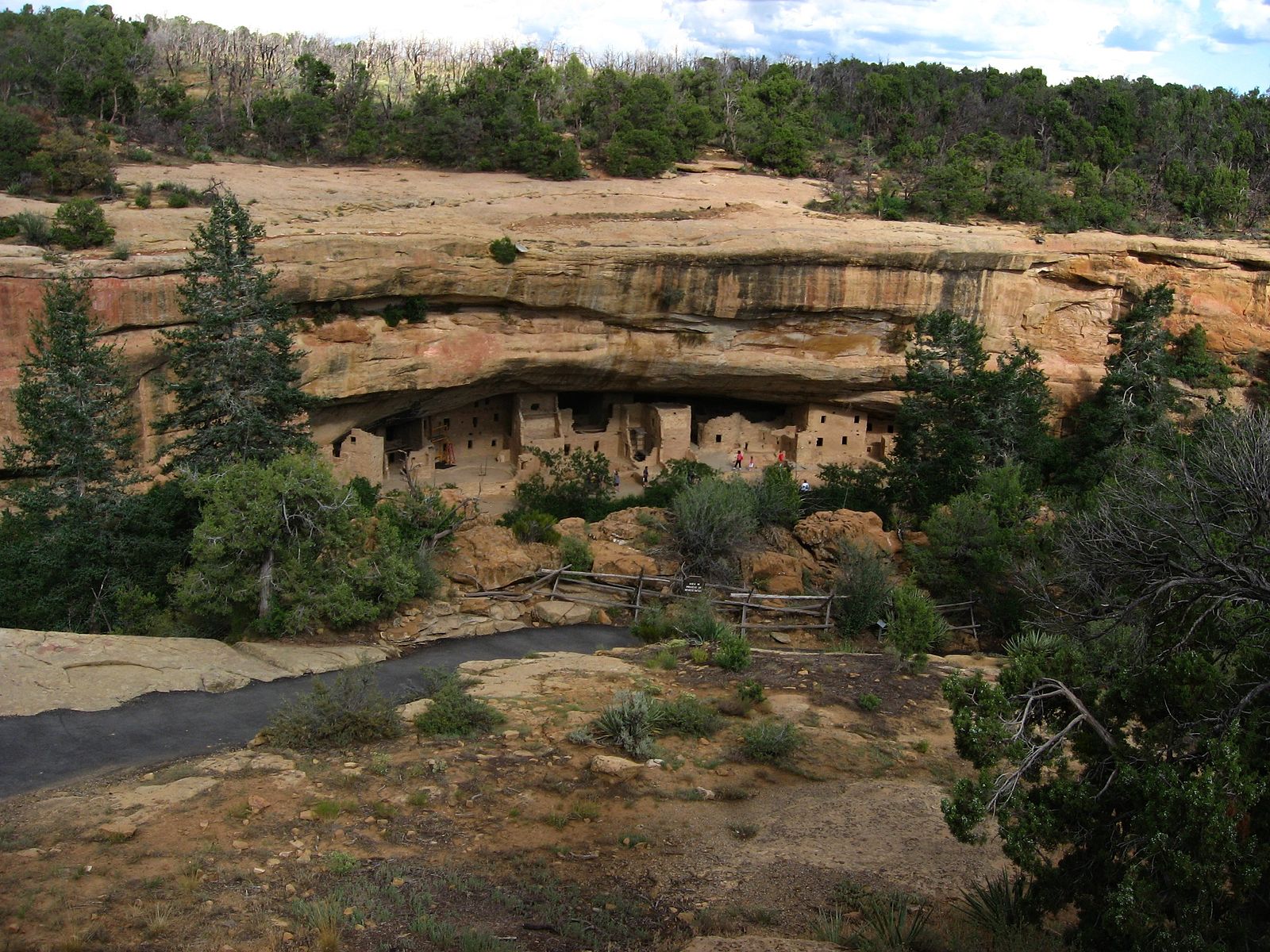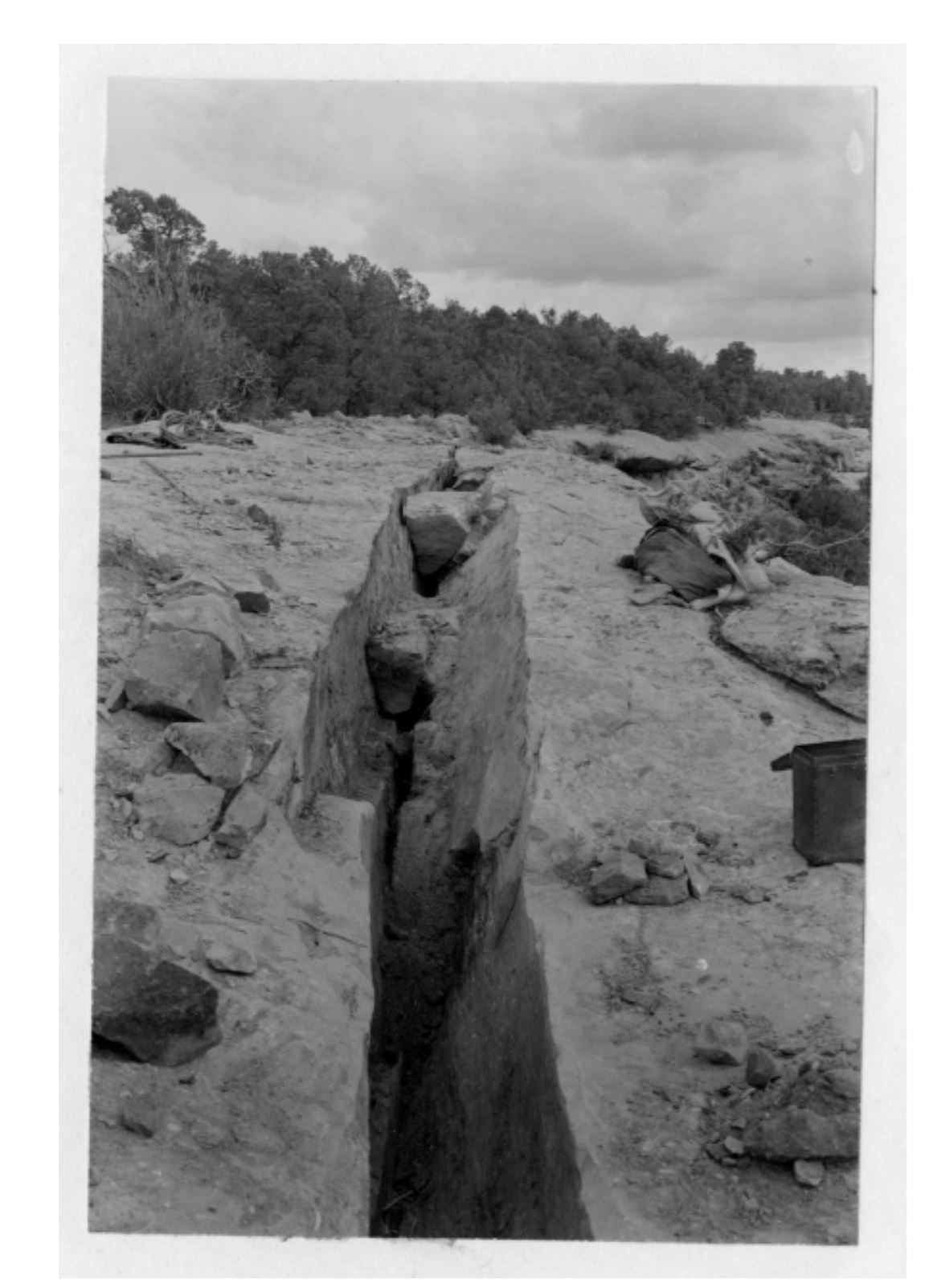24 December 2021
Spruce Tree House – extreme rockfall management
Posted by Dave Petley
Spruce Tree House – extreme rockfall management
The Spruce Tree House alcove complex is a truly remarkable cliff dwelling located in Mesa Verde National Park in Colorado. It was constructed by the Ancestral Pueblo people over 700 years ago beneath a beautiful natural arch. In total the Spruce Tree House complex includes 114 rooms:-

The Spruce Tree House alcove complex in Colorado. Image from Wikipedia.
.
Unfortunately natural rock arches are, in a geological sense, transient features, meaning that in the long term the safety of this complex is inevitably compromised. Back in 1908 a large crack was documented in the arch and downward deformation of the rock mass was also observed.
The history of subsequent works to try to stabilise the arch is documented in an NPS report (Mason 2016) that analyses the stability of the arch. This notes that in the 1920s the site suffered a significant rockfall, and by the 1940s major problems were apparent, most notably a very large crack at the crest of the arch, as the image below shows:-

The large crack at Spruce Tree House, as depicted in the 1940 report. Image from Mason (2016).
.
To manage the risk, a drainage ditch had been constructed. Mason (2016) notes the full range of works undertaken in the 1940s:
“…the arch crack was cleaned … of debris and plants and subsequently filled at the ends with emulsified asphalt and a roof structure was built over the wider center sections. Lancaster cleaned the crack along the full length and installed a “water-proofing” system to prevent surface water from seeping into the alcove. It appears that the technique was ineffective because of numerous attempts at resealing.”
In 1960 the problems became serious once again after another rockfall. A further round of works were undertaken in 1962, including the installation of 46 rock bolts and further efforts to seal the crack.
Whilst the site remains intact, a further round of inspections and analyses were initiated after a rockfall in 2015. These have found that there are problems with the rock bolt method that was adopted, and it is likely that the seal in the crack has caused a rerouting of groundwater flow paths, which is probably degrading other parts of the rock mass. And of course the whole rock mass is undergoing natural degradation.
Since then there has been an extensive set of investigations and analyses to determine a solution for the problems at the site that will protect it for the next century. The Durango Herald has a good article that provides some detail:
“It appears the fix is going to be multi-pronged. The park will likely use rock bolts again, but this time, installed at offset angles, which would increase strength (think of the root structure of a tree). And, new material, likely a type of metal, will be used to fill the crack to stop water from entering.”
It will be fascinating to see the detailed design for the Spruce Tree House site – this is rock slope engineering at its most challenging given the importance of the location; the rock conditions; the vulnerability of the arch and the archaeology; and the importance of the site to the National Park.
.
Reference
Mason, J.A. 2016. Condition assessment report, Spruce Tree House alcove sandstone arch, Mesa Verde National Park, Mesa Verde, Colorado. NOS Report, available online.


 Dave Petley is the Vice-Chancellor of the University of Hull in the United Kingdom. His blog provides commentary and analysis of landslide events occurring worldwide, including the landslides themselves, latest research, and conferences and meetings.
Dave Petley is the Vice-Chancellor of the University of Hull in the United Kingdom. His blog provides commentary and analysis of landslide events occurring worldwide, including the landslides themselves, latest research, and conferences and meetings.
Nothing humans can do that Nature will not, sooner or later, obliterate.
And that goes for 700-yo dwellings, as well as mine tailings, and stabilisation efforts